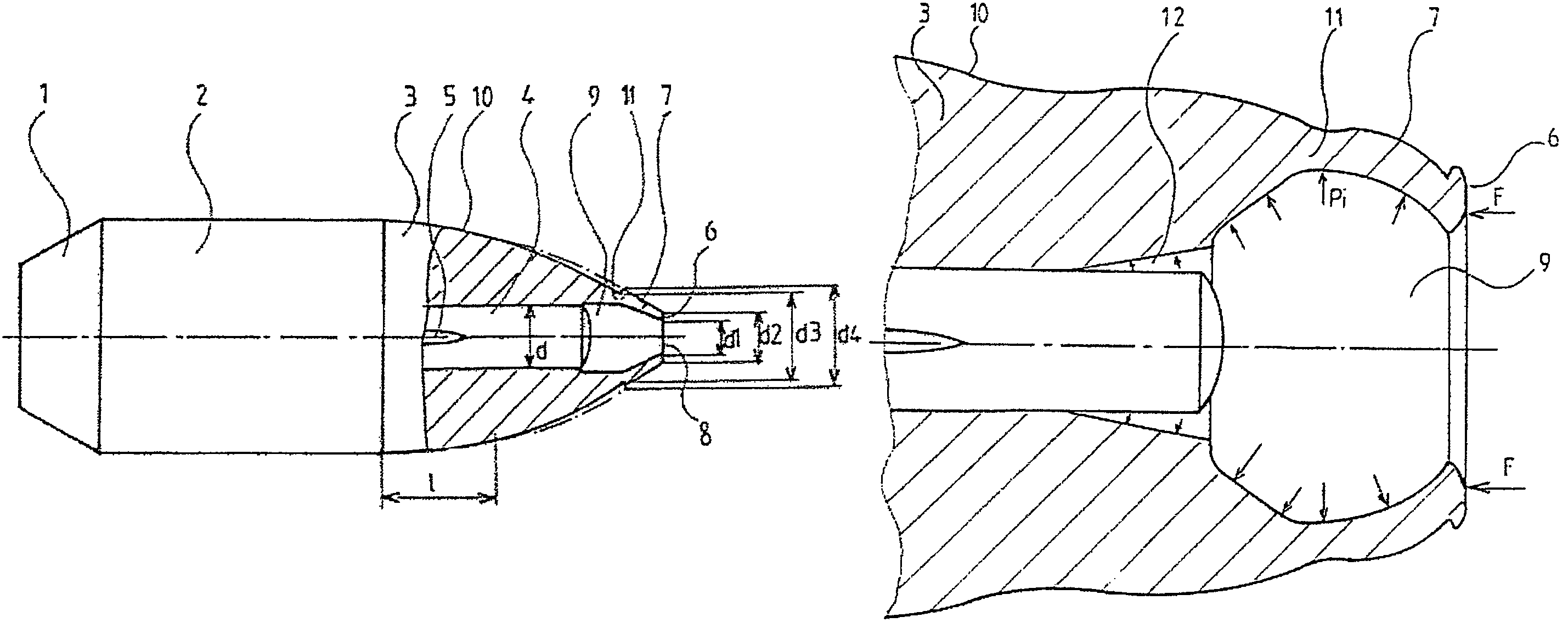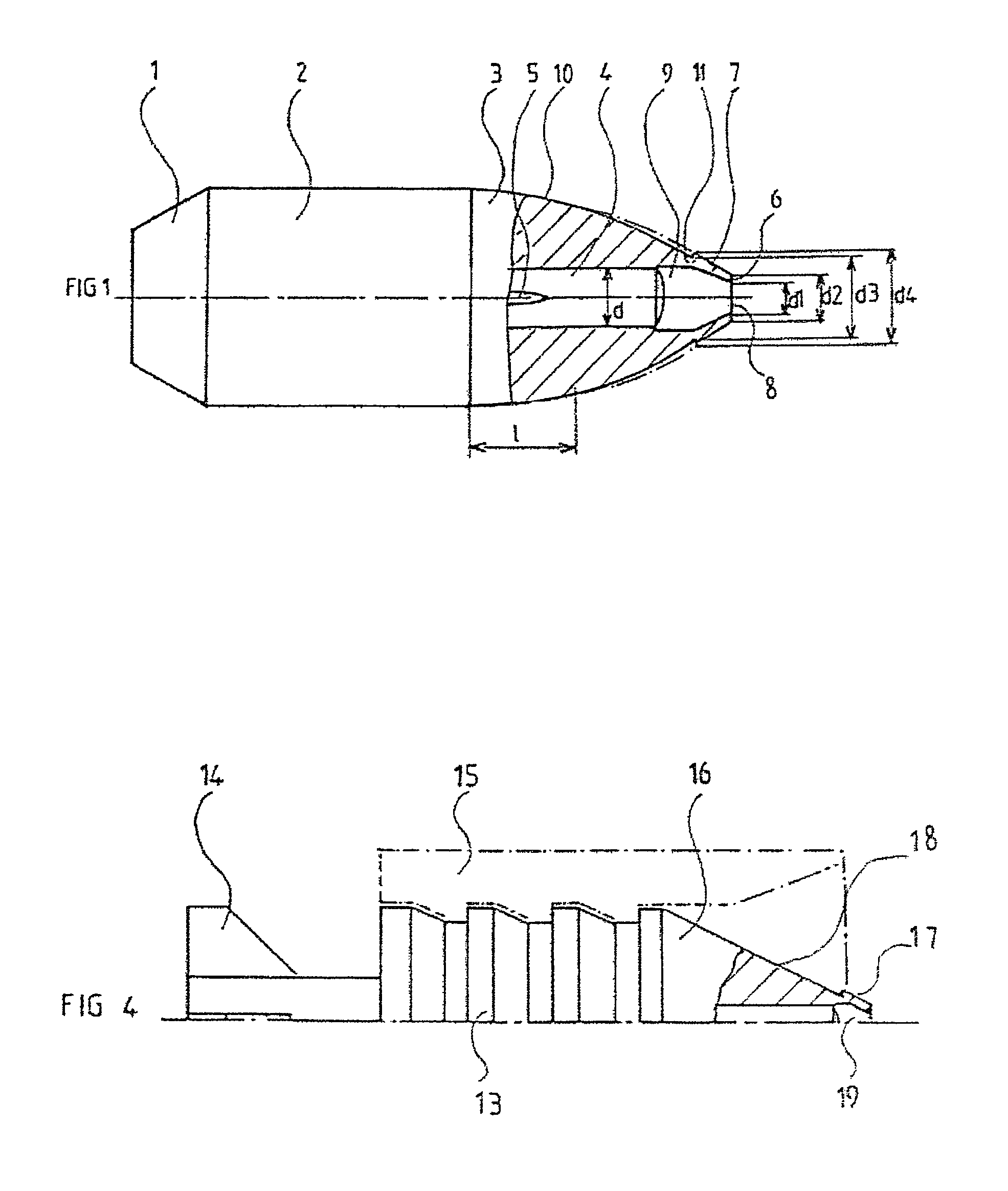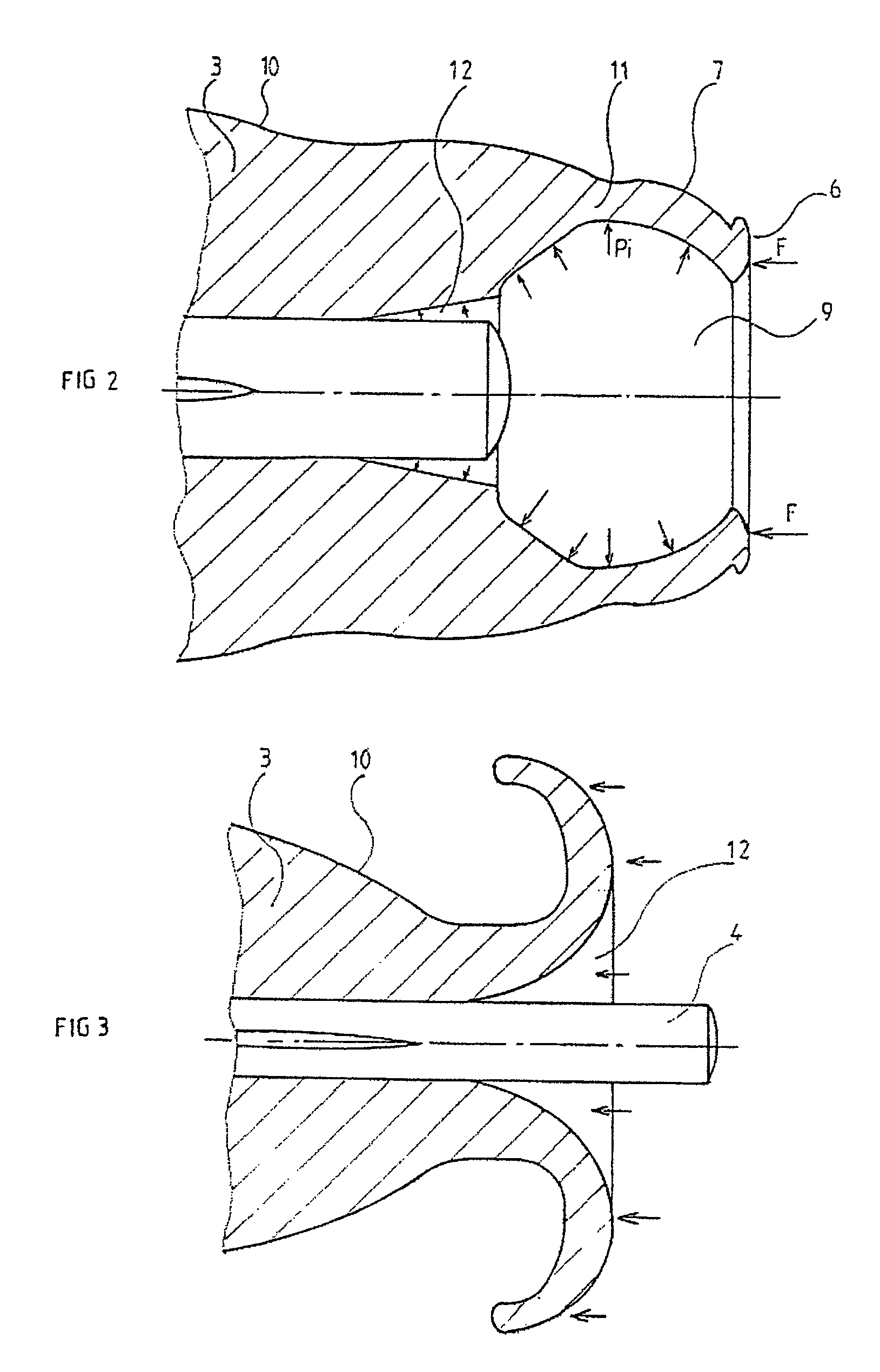Hunting bullet with reduced aerodynamic resistance
a technology of aerodynamic resistance and bullets, which is applied in the direction of ammunition, ammunition projectiles, weapons components, etc., can solve the problems of large loss of mass on impact with the target, high velocity loss on the trajectory, and impair the terminal efficiency, so as to reduce the aerodynamic drag coefficient and reduce the aerodynamic drag on the trajectory. , the effect of low aerodynamic drag
- Summary
- Abstract
- Description
- Claims
- Application Information
AI Technical Summary
Benefits of technology
Problems solved by technology
Method used
Image
Examples
Embodiment Construction
[0038]As shown in FIG. 1, the bullet with the caliber of the gun is of the monobloc metal type and comprises at its rear portion a basal narrowing (1), at its central portion a body (2), and at its front portion a stepped ogive (3).
[0039]An internal supported shaft (4) whose surface supports longitudinal ribs (5) is placed in a hole drilled in the axis of the bullet body and passing through the ogive (3).
[0040]The bullet supporting the internal shaft (4) is inserted into a case furnished with a percussion cap and a charge, of conventional type, not shown.
[0041]The ogival head (3) of the bullet is very streamlined to reduce aerodynamic drag as much as possible, and the diameters d1 of the orifice (8) and d2 of the flat (6) of the nose (7) that surrounds it are as small as possible. Thus, in the example of FIG. 1, the diameter d2 of the flat is slightly less than the diameter d of the internal shaft (4), the ratio d2:d being close to 0.8:1, while the diameter d1 of the orifice is such...
PUM
 Login to View More
Login to View More Abstract
Description
Claims
Application Information
 Login to View More
Login to View More - R&D
- Intellectual Property
- Life Sciences
- Materials
- Tech Scout
- Unparalleled Data Quality
- Higher Quality Content
- 60% Fewer Hallucinations
Browse by: Latest US Patents, China's latest patents, Technical Efficacy Thesaurus, Application Domain, Technology Topic, Popular Technical Reports.
© 2025 PatSnap. All rights reserved.Legal|Privacy policy|Modern Slavery Act Transparency Statement|Sitemap|About US| Contact US: help@patsnap.com



